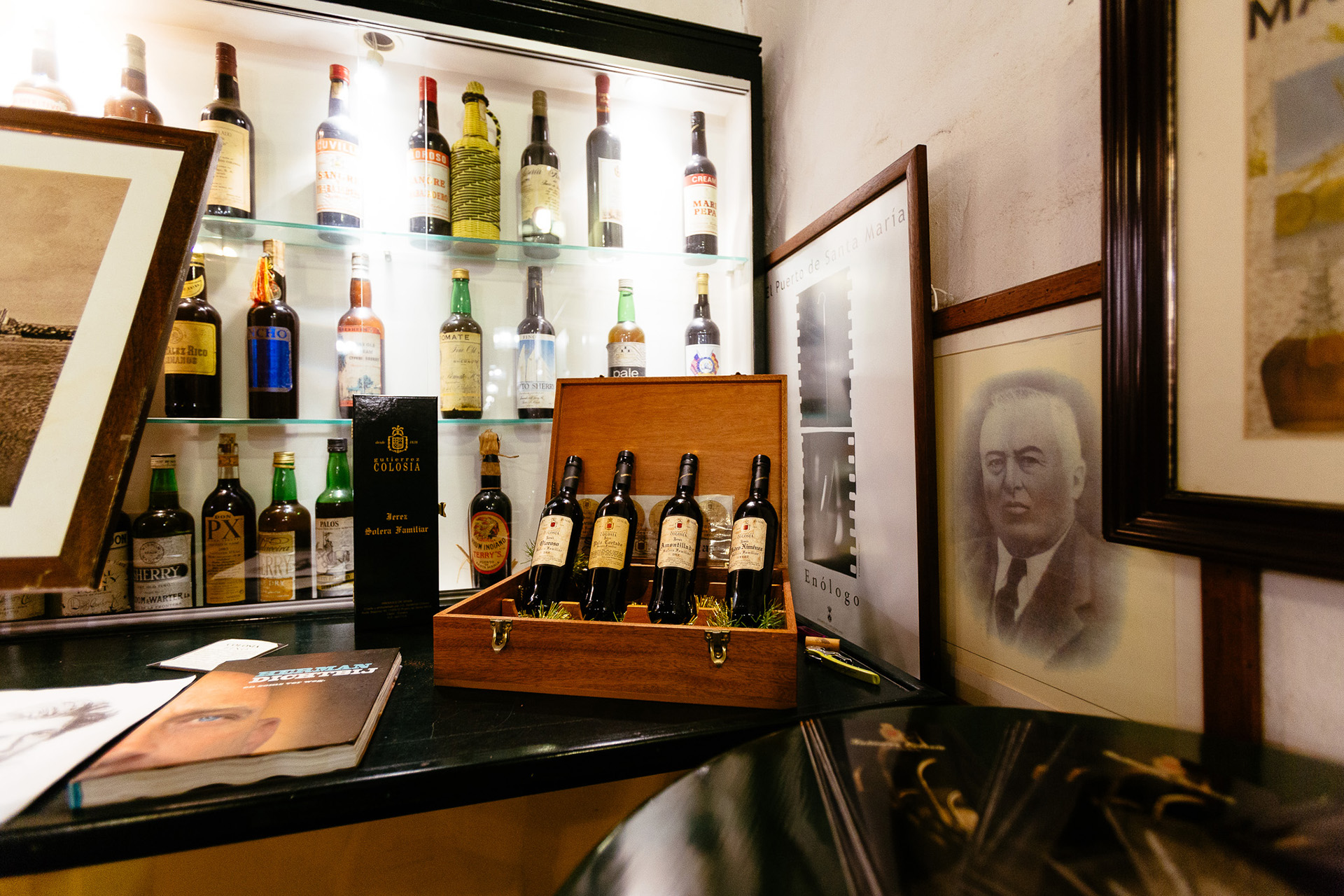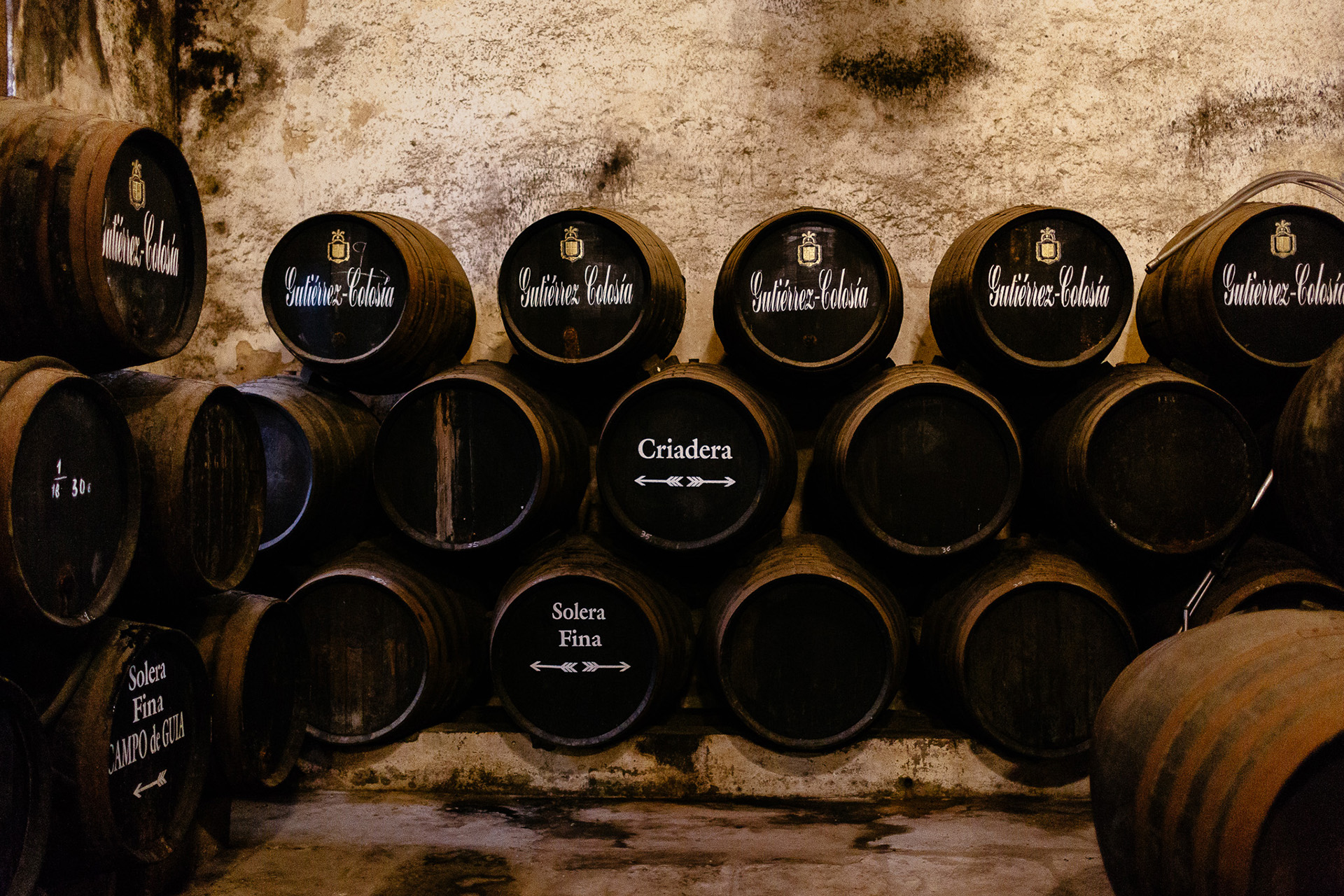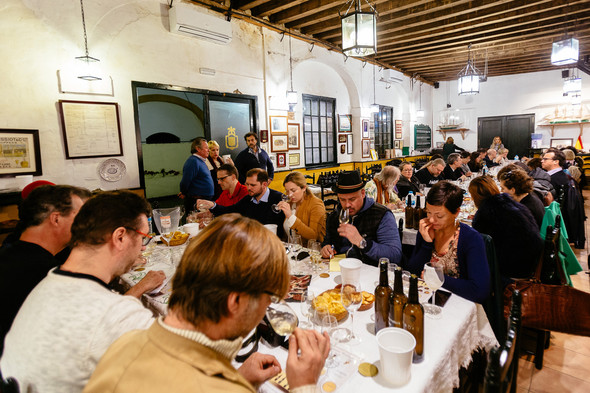Bodegas Gutiérrez Colosía is located in Puerto de Santa Maria, the only bodega now located on the banks of the River Guadelete, meaning ‘River of Forgetfulness’. Such a location provides perfect humidity for the ageing of sherry. In the past, the river, therefore fresh water not sea water, actually came right up to the walls of the bodega.
The first expedition to America left from the city and the wealth of the city increased following its discovery due to the commercial traffic established with the Indies and the settlement of families of Cargadores and ship owners. Thus, there are also a lot of palaces in the city, which is also known as the city of palaces. In addition, many wine cellars with a style known as ‘nave cathedrals’, lofty and with numerous arches, were built in the town. Such a style allowed for better exposure of the wines to the climate of the region, in particular the cooling effect of the ‘poniente’ wind.
The historic bodega was built in 1838 and has always been a winery. It was acquired by José Guttiérrez Dosal, the ancestor of the current wine-making generation, at the beginning of the twentieth century. He also bought the ruins of the Palace of the Count of Cumbrehermosa-Cargador de India, including its wine cellars, and built two additional cellars here. Fortunately, it escaped the fate of many wineries which were used by troops during the civil war, as it was too far from the town centre to be attractive.

The bodega’s floor is stone, rather than dirt as in many bodegas, as they don’t need to create humidity due to their proximity to the river and ocean with its warm southern winds. The warmer winters and fresher summers are perfect for the biological ageing of fino and manzanilla. Moreover, they get the most rain here in the whole of Spain, much more than in the UK in fact, usually around 3000l/m2, although this last year, they have had far less, only 600-800l. In March and April, there is usually torrential rain, providing the perfect humidity for the sherry flor to develop. In fact, here it never dies in their biological solera. They have one fino where, after 5 years, the alcohol has now reached 16% ABV and, remarkably, the flor is still alive! They are keeping it by way of experiment, as they don’t understand why the flor is still alive (flor only usually thrives at 15-15.5% ABV). The temperature in the bodega never exceeds 23°C. It’s cooler here in summer evenings compared to Jerez, with a difference of 6-7°C between the two cities, 18°C compared to 36°C during the day!

In the past, Puerto was rather the city of fino whereas Jerez was more focussed on oloroso, where there is greater evaporation due to the heat and lower humidity. Although, the number of bodegas in Puerto has dwindled, with many moving to Jerez. Manzanilla was produced more for local consumption whereas fino was meant to travel, so the alcohol had to be higher and in the past, it was bottled at 16.5%. In years gone by, some producers also accelerated the oxidative process of oloroso by putting the wine out in the sun.
In the past the family were rather an almacedista, preferring to created ’baby’ wines and then sell them onto big players like Williams & Humbert, who used to come here to buy. They also produced amontillado, which if it ended up too strong and powerful, like oloroso, it wouldn’t get bought, so would end as palo cortado, higher in alcohol, an accident, a mistake, aged and somewhere between amontillado and oloroso.

We tasted through the different stages of creating a sherry, from the mosto, as the base wine is called here, through the sobretabla (the first layer in a solera after the wine has been fortified) where the notes of flor are just starting to appear. As we progressed through the criaderas, we could see how the nuttiness develops and the wine becomes saltier and drier with less glycerol, and then onto the amontillado criaderas, seeing how biologically aged sherry develops with age. The oloroso undergoes a slower process here, nearer the sea, so is lighter and more elegant, but has never had biological ageing. Our tasting concluded with the ’mistake’, an aged palo cortado. Delicious nutty, biscuity treat!






